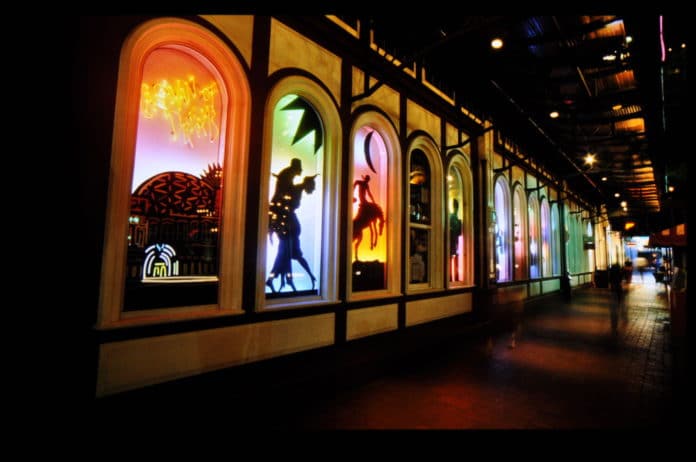Downtown: Then and Now
Residences
All Own Rent
1988 765 17 748
2018 3845 939 2906
Hotel rooms
1988 2018
Hotel Rooms 1849 2881
Source: Downtown Fort Worth Inc.
Thirty years ago, Fort Worth along with the rest of Texas was reeling from one of its worst financial disasters in history.
Throughout the state, a bank or savings and loan had failed nearly every week in the late 1980s under the weight of collapsing oil and real estate markets. This period of the Savings and Loan Crisis, as it was commonly known, was regarded as the most serious banking crisis since the Great Depression.
“It was devastating,” recalled Jack Huff, a principal with Transwestern. “The recession in 2008 was not nearly as bad for us as the late 80s was.”
The fallout from the crisis was that the Federal Deposit Insurance Corp. and the Resolution Trust Corp. became the largest owners of commercial real estate in Fort Worth and large portions of Texas, said Huff, who was working in the industry in Fort Worth at the time.
“It can best be summed up as contrast of overbuilding and the economy,” recalled Todd Burnette of JLL in Fort Worth. “The economy was stalled, and developers added over 2.5 million square feet of new space to the market.”
In 1988, the year the Fort Worth Business Press was founded, the misery of the crisis was evident throughout downtown Fort Worth. Stores had closed and buildings were boarded up.
The vacancy rate for Class A office space swelled above 20 percent.
“Rental rates averaged $17.29 per square foot for those deals that actually were done,” Burnette said. “The decision for office users was not to make a decision.”
Yet, the seeds of what was to come had already been planted. Caravan of Dreams, a nightlife hotspot featuring an eclectic mix of live music, was in full swing, bringing people into the center of the city after dark.
The venue that included a recording studio, performance theater, two dance studios and a rooftop garden was the start of the Bass family investment in Sundance Square, the sweeping downtown redevelopment project that is widely regarded as the salvation and most impactful change to downtown in the past three decades.
Caravan of Dreams did not last but its name suggested a prophecy of a grand future marked by Fort Worth’s resurgence through the grit and determination of civic leaders and the vision and willingness of the Bass family to invest in downtown.
“The downtown of today looks a lot like the one envisioned in early plans: robust pedestrian activity in a high quality, mixed use district full of restaurants, retail, residential, hotels and office buildings,” said Andy Taft, president of Downtown Fort Worth Inc. “Live entertainment, parks, river connectivity and mass transit.”
Rebounding from the “massive divestment” of the 80s, “the priority was filling office towers and getting people to believe in downtown again,” Taft said.
Eventually, the office space was backfilled and progress was moving ahead on Sundance Square and other major improvements such as the landmark $67 million Nancy Lee and Perry R. Bass Performance Hall, which opened in 1998.
But it was a natural disaster that rattled Fort Worth and shook growth into high gear, according to Johnny Campbell, CEO of Sundance Square.
A powerful F3 tornado struck downtown on March 28, 2000, causing an estimated $450 million in damage and two deaths.
“There was an accelerated pace of change since just after the tornado,” Campbell said. “It really fast-tracked the momentum of the master plan of 1981 for downtown.”
Severely damaged by the tornado was the Bank One building, which recouped as a condo building known as The Tower. That alone significantly moved the needle toward adding a residential component to downtown.
In 1988, there were only 765 residences in downtown Fort Worth: 748 rental units and 17 owned properties, according at research from Downtown Fort Worth Inc. This year, there are 3,845 residences downtown: 2,096 apartments and 939 condos and townhomes.
Sundance Square, which charts it’s founding to 1979 and was shepherded along early by a 1980 federal grant for the reconstruction of Main Street, now spans 35 blocks of downtown and includes 42 historic and contemporary buildings, totaling about 4 million square feet of commercial office and retail space.
The live, play, work approach of Sundance Square has earned it widespread recognition for excellence in urban planning. It has a 24/7 lifestyle that makes it a destination for dining, shopping and entertainment for local residents as well as tourists.
But for Campbell and others involved in the development project, the real secret to Sundance Square’s success has been its unyielding commitment to historic preservation.
“The fact that Sundance Square is authentic and genuine and true to the history and past of Fort Worth is the secret to its success,” Campbell said. “New buildings in Sundance Square are carefully planned and designed to fit into the palate of Fort Worth.”
The Sundance Square example of redevelopment has also been carried throughout downtown as well as other parts of the city. XTO Energy founder Bob Simpson bought and refurbished eight historic downtown buildings for company use as part of his personal interest in helping preserve the past.
Now, with XTO Energy transferring the majority of its Fort Worth workforce to Houston, the XTO properties have sold or are selling to users who will either maintain them as office space or repurpose them for residential and hotel use.
Where Fort Worth has stood out with its urban development has been its ability to blend old and new.
“It’s hard to tell where Sundance Square starts and stops in downtown,” Campbell said. “That’s a good thing.”
The success of Sundance Square and downtown has inspired similar redevelopment in other parts of Fort Worth, including West Seventh and the Historic Southside district.
“If you look around at West Seventh and the near Southside you can see that the redevelopment and repurposing is due to the fact that is was successful in downtown and Sundance Square,” Campbell said.
Panther Island
Former Mayor Ken Barr said even the Trinity River Vision’s vaunted Panther Island project is based on the model of successful land reclamation and redevelopment.
“There have been environmental challenges and other problems resulting from an area that had businesses that were 150 years old,” Barr said. “But those will be overcome, and we will have a beautiful new development there.”
Time does not standstill in Fort Worth and the rapid pace of the past few years has brought many improvements to the city, including the Chisholm Trail Parkway and the Clearfork and Waterside developments. The new Dickies Arena will be complete in the Will Rogers Memorial Center complex next year.
The downtown skyline has a new look with the addition of the 25-story Frost Tower office skyscraper and a new commuter rail line is set to open around the end of the year linking downtown to Dallas Fort Worth International Airport for the first time.
A redeveloped and expanded convention center downtown is expected to boost convention business and the need for more hotels. Downtown currently has 2,881 hotel rooms compared to 1,849 in 1988.
The office market now is vastly different than it was during its pitiful state in 1988.
“The economy is booming and companies are hiring,” Burnette said. “People are moving to the area for jobs and a great quality of life.”
Vacancy is about 13.9 percent and rental rates average around $28 per square foot except at Frost Tower, where rents are reaching around $40 per square foot.
“While it is mostly a tenant’s market, landlords are blessed compared to the late 80s,” Burnette said.







